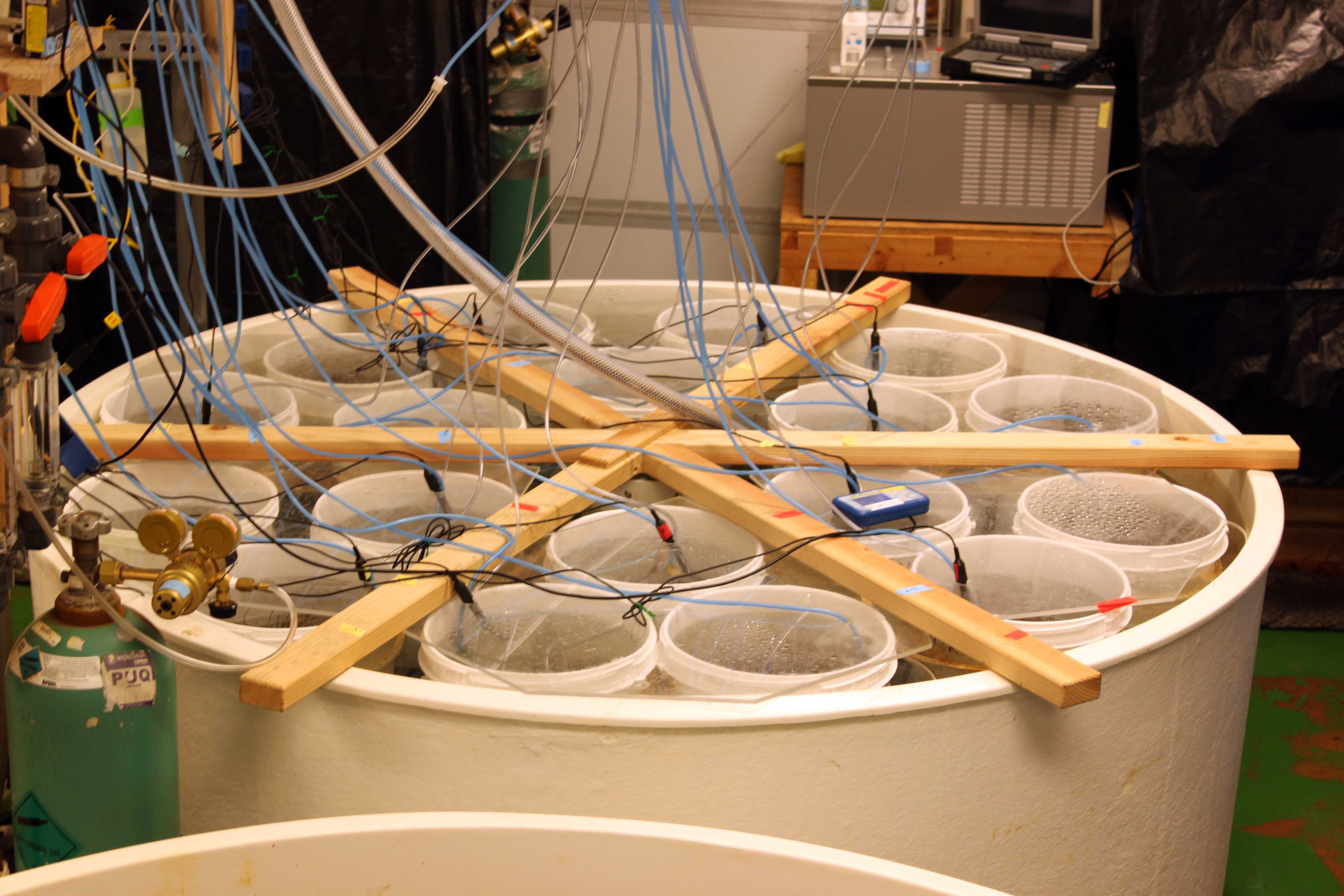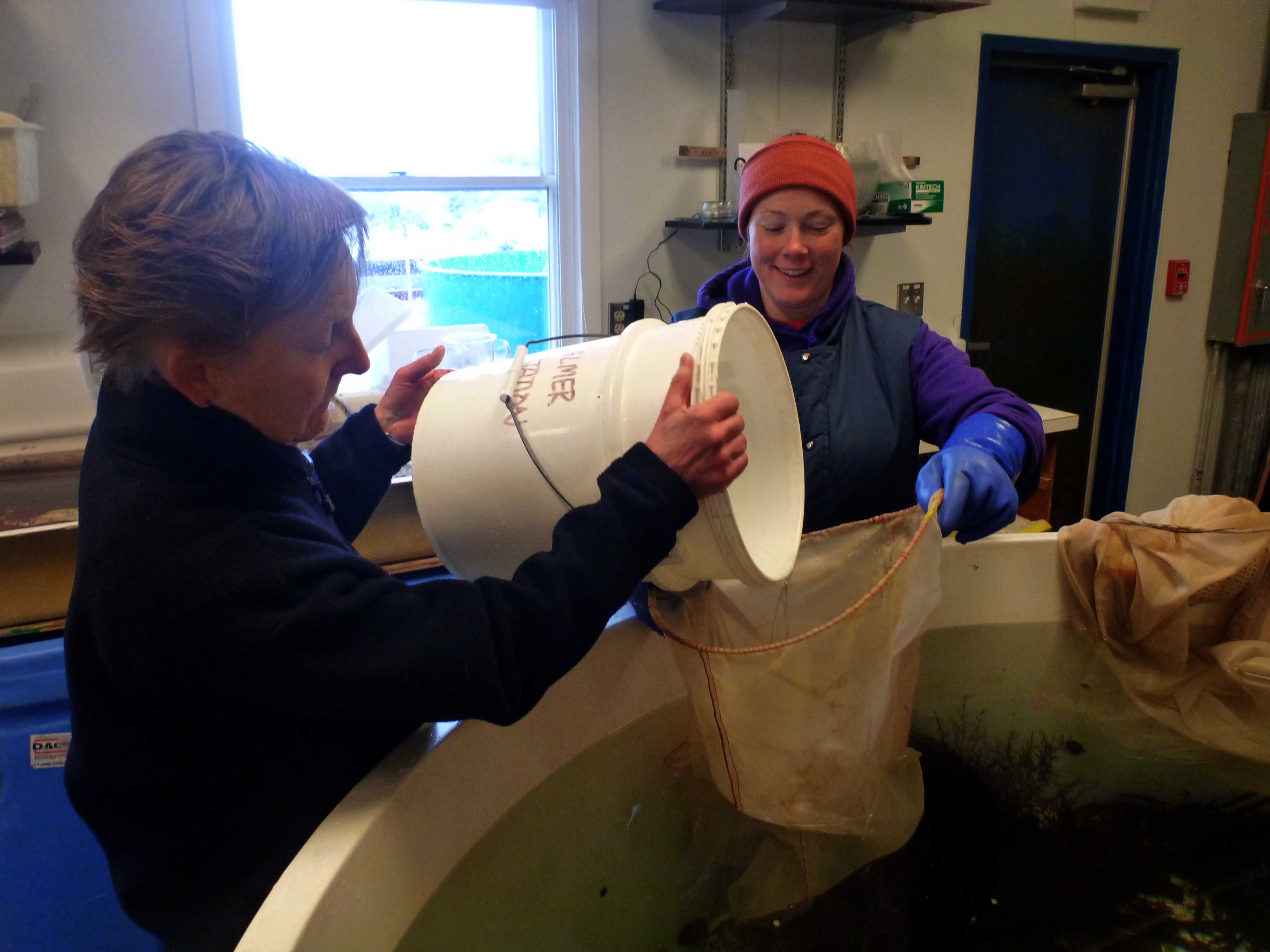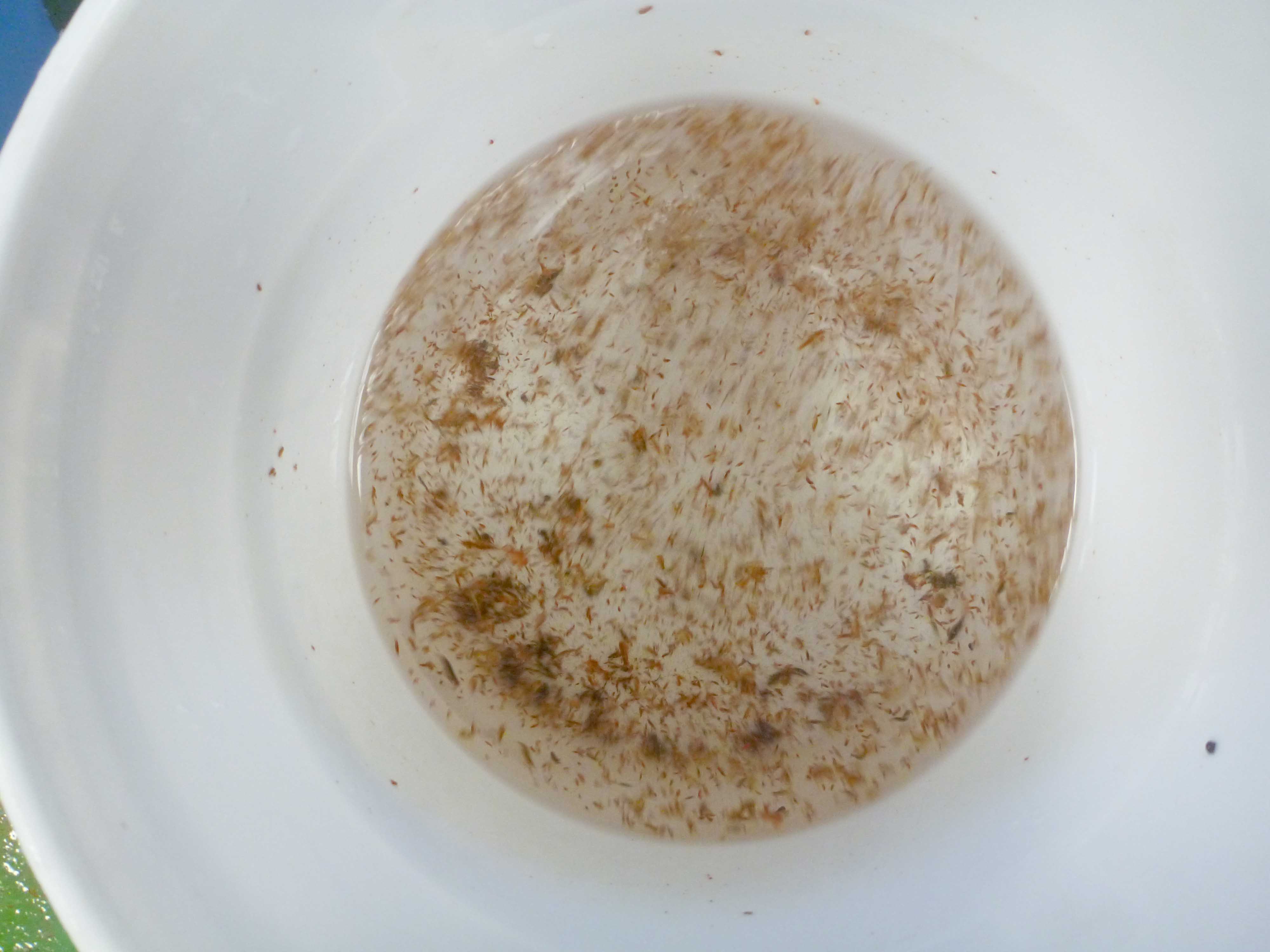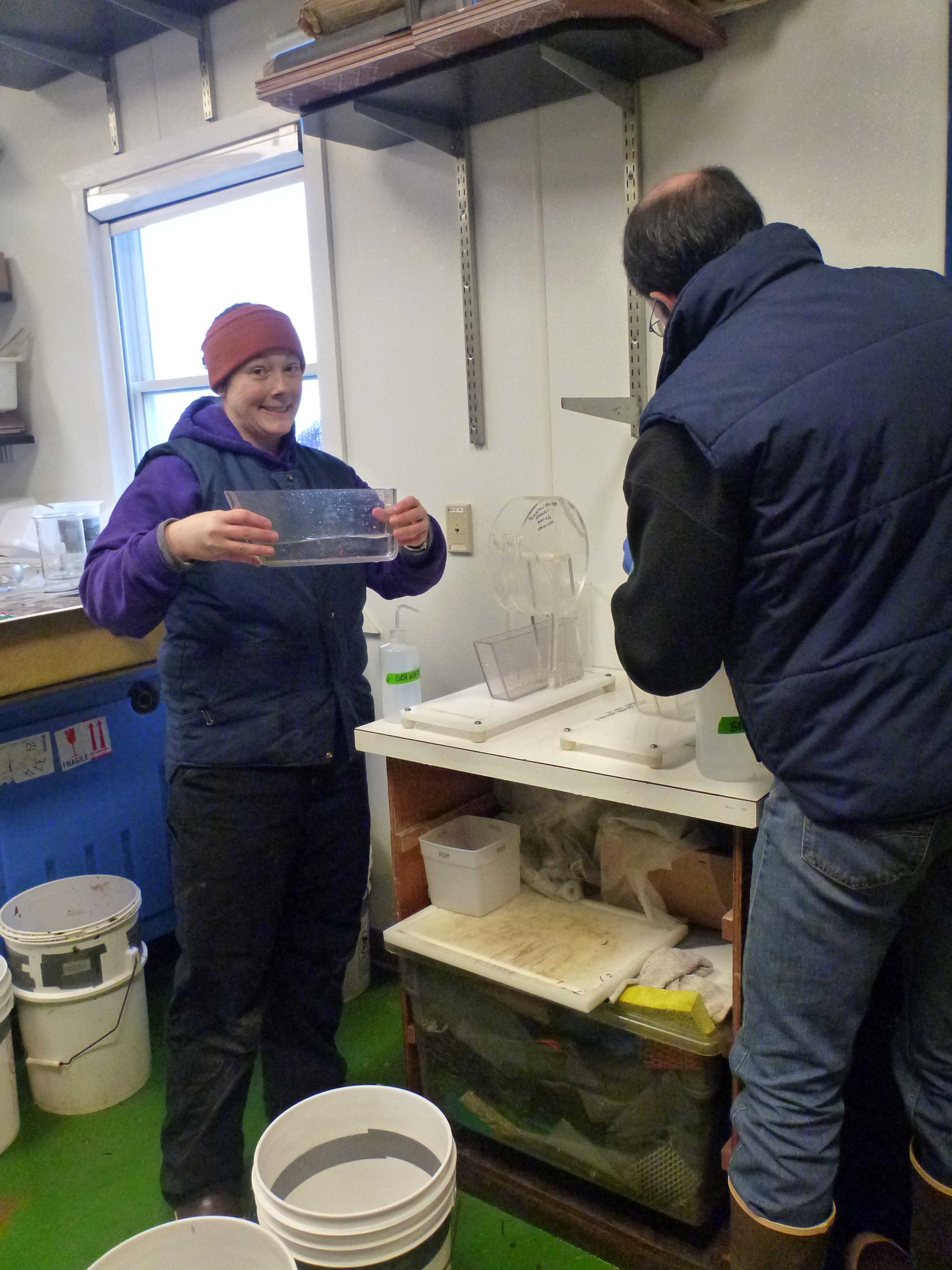
On Monday this week we built 18 mesocosm "universes" in the Palmer Station aquarium. That may sound a little out of this world, but let me explain. This week we started our mesocosm experiment, utilizing the relationship a large species of brown algae (the same big branched brown Desmarestia menziesii I mentioned in a previous post) and all of the amphipods on it. We created smaller simulated natural "community" assemblages from carefully collected Desmarestia. See the image right for my multple universes, complete with air lines and pH probes.
I refer to these mesocosms as "universes" because as we were putting the experiment together I was reminded of an early experimental population ecology paper I read last year in one of my ecology seminar classes. This paper (Huffaker 1958 in Hilgardia for those interested) described a system where Dr. Huffaker created what he called "universes" on of oranges with mite communities. It sounds strange but it was an early, simplified version of our mesocosms. As you can tell, the long cold hours spent in the aquarium building allow me lots of time to contemplate.
The term universe is no longer used to describe this type of set-up anymore. It has been abandoned for the terms mesocosm or microcosm (depending on the size of the experiment). A mesocosm can be defined as an "experimentally controlled" natural environment, allowing for interactions between varieties of members of a naturally occurring community assemblage.

Mesocosm experiments are being utilized to study the effects of ocean acidification in a variety of environments, such as the Arctic (http://www.bioacid.de) or in more tropical regions (http://www.ouramazingplanet.com/637-coral-reef-research-station-australia-101208.html) to name a few examples. Use of mesocosms in experiments is an increasingly popular and extremely informative way to study the effects of climate change and ocean acidification. It gives us information about individual species as well as how interactions between species and their environment may be alter by a changing environment.
To set up our mesocosms we used the Desmarestia menziesii that were collected on our dives (previously described by Chuck and Maggie from a diver's and tender's perspective, resp.). Chuck and I collected a medium sized D. menziesii, and all amphipods hiding among the branched fronds of the seaweed, from each of three dive sites as Maggie detailed. We chose to collect algae and amphipods from more than one site to ensure we get a balanced representation of the amphipod populations that live on D. menziesii around Palmer Station.
Once we got all of our samples collected and back to the Palmer aquarium we began setting up the mesocosms. Since our mesocosms (buckets) holds 5 gallons of seawater we used a pre-calculated small part of algae collected for each mesocosm. An entire individual wouldn't fit very well, way too crowded for happy algae and amphipods.
To equally distribute our collected amphipod populations, we first had to dislodge all of the amphipods from the Desmarestia by repeatedly rinsing it in seawater. After each algal rinse, the seawater and dislodged amphipods were carefully poured back into one of our large fine-mesh amphipod collecting bags and following the last, amphipod-free rinse, transferred to one common bucket. This was repeated for each of the three site specific Desmarestia collected.

At last, we had a bucket with all of the amphipods removed from all the Desmarestia. We then needed to equally distribute these amphipods among all of our mesocosms. First, we determined the total mass of the algae collected. Then we referred to previously acquired published data of amphipod numbers per mass of alga to guide us. Following some fun with math, we determined how to portion the collected amphipods up equally among the 18 mesocosms without counting every single one. A plankton splitter was key to this process.
The plankton splitter is ideal for dividing up a group of small swimming individuals, like amphipods, because it allows a sample of seawater with associated critters to be added, allowed to become evenly mixed, and then volumetrically split in half without too much jostling or handling (which amphipods don't tend to like very much).

After using the plankton splitter we added the amphipods from each of the rectangular trays to a separate bucket of seawater, to further dilute the population. We kept splitting and diluting the amphipods until we had enough buckets of amphipods, to ensure an equal and representative "sub-population" of amphipods for each mesocosm.
Once we finally had all of our dilutions completed, the amphipods were strained from the water in the bucket by gently rinsed into one of our mesh collecting bags. We next gently transferred all of the amphipods to one of the eighteen randomly selected mesocosm containers (Chuck and I pulled numbers out of a hat to determine the order of buckets getting populated !- science is crazy strict that way!)
For this experiment, each mesocosm consists of one of three pH treatments. We will be maintaining these amphipod-algal mesocosm assemblages to see if pH will alter or significantly influence the dynamics of this community. It was a long and tiring day of playing in chilly seawater (either when diving or in the aquarium building) but it was worth it. The mesocosms are now filled with algae and amphipods, 18 little assemblages for me to observe and care for over the next several weeks. I will keep you posted on the state of the "universe".